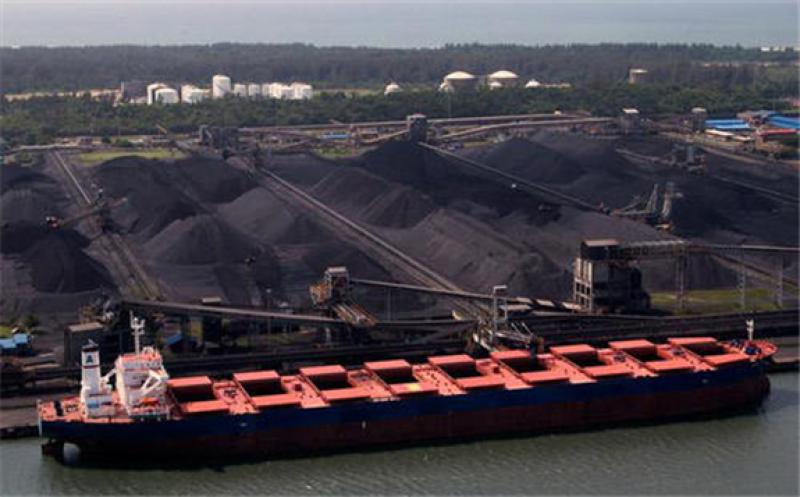Recovering nuclear availability in Japan towards the end of the first quarter of 2021 could trim the country's demand for coal imports. But further delays to nuclear restarts, dwindling fuel-switching competition and the possibility of a colder-than-expected winter are upside risks for coal burn.

The return of utility Kyushu Electric Power's 1.2GW Genkai 3 reactor on 23 November will boost Japan's operational nuclear capacity from recent lows, and although availability is expected to remain constrained in December, it should pick up sharply towards the end of the first quarter of next year.
Based on operator schedules and assuming Shikoku Electric Power's 890MW Ikata 3 unit remains off line but Kansai Electric Power's 1.2GW Ohi 3 unit returns in January, nuclear availability will rise from 1.9GW in November to 4.5GW in January and a near two-year high of almost 8GW by March.
Assuming a 2pc year-on-year drop in generation, in line with the third quarter of this year, and flat year-on-year renewables generation, Japan's January-March thermal generation could average 58.3GW, down by 0.9GW on the year, Argus analysis shows.
This is equivalent to 949,000t less NAR 6,000 kcal/kg coal burnt in 40pc efficient plants over the three-month period, although coal and LNG consumption would probably both be affected.
Most of the thermal generation decline is anticipated in March, owing to nuclear returns being backloaded towards the end of the quarter, with January fossil fuel output likely to be practically flat compared with a year earlier.
Has gas vs coal competition peaked?
Falling LNG import costs have provided stiffer competition for coal in Japan's power sector in recent months. But as oil prices have staged a tentative recovery from their March-May lows, there are signs that the competition from gas may have peaked.
Coal's cost advantage over gas for power generation widened last month, snapping five consecutive months of gas gaining ground.
The average value of Japanese LNG imports rose to $5.81/mn Btu in October, according to customs data, up by 5.4pc on the month but 37.6pc lower on the year. But the value of Japanese coal imports fell, dropping by 2pc on the month and 30pc on the year to $71.30/t.
Based on these costs, the implied tax-inclusive generation cost for a 60pc efficient gas plant and a 38pc coal plant would be $34.96/MWh and $28.48/MWh, respectively, Argus estimates. Coal's cost advantage over gas rose to $6.48/MWh, up from $4.29/MWh in September, but still well below $16.12/MWh in October 2019.
Recovering oil prices since April are set to filter through to Japan's LNG term supply in the months ahead, owing to the lag built into these import contracts, which could limit further gas-to-coal fuel switching this winter.
October coal imports up
Recent import patterns suggest that this trend is starting to happen.
Japanese thermal coal imports rose by 1.2pc — or nearly 110,000t — on the year to 9.3mn t in October, according to provisional finance ministry data. But Japanese LNG imports fell by 4.7pc on the year to 5.9mn t.
Imports of Australian coal rose by 137,000t on the year to a maximum 6mn t, although this may include smaller amounts from South Africa, Colombia and other origins that are not differentiated in the provisional data.
Imports from Indonesia and Russia were also firm, with the latter's at a record high. Japanese receipts from the countries increased by 2.6pc and 40.1pc to 1.2mn t and 2mn t, respectively. But imports from the US fell sharply, dropping by 301,000t to 91,000t last month.
Upside risks for coal outlook
Although the outlook for January-March coal demand appears relatively weak, especially towards the end of the quarter, there are several factors that could change the scenario.
Most crucially, any delay to the return of Japan's nuclear fleet will result in a greater draw on thermal power sources. The Ohi 3 unit merits keeping a particularly close eye on, as it has been down since 20 July and was originally expected to return on 26 September. But the date was pushed back owing to damage to the reactor's pressurised spray line and there is no firm resumption date.
A colder-than-forecast winter period is another possible upside risk. The current forecast appears relatively benign, but the development of a moderate-to-strong La Nina weather event could alter this, given La Nina years are typically associated with below-average temperatures in northeast Asia.
In the month to 13 December, there is a 60pc likelihood of above-average temperatures in southern Japan, rising to at least a 70pc chance in the north of the country, according to the Japanese Meteorological Agency (JMA).
But in later December, January and February, there is a greater likelihood of temperatures being either in line with or below normal, according to the JMA. Temperatures in Tokyo exceeded the 10-year seasonal mean by an average of 1.2°C in December-February last winter.
This article is reproduced at www.argusmedia.com